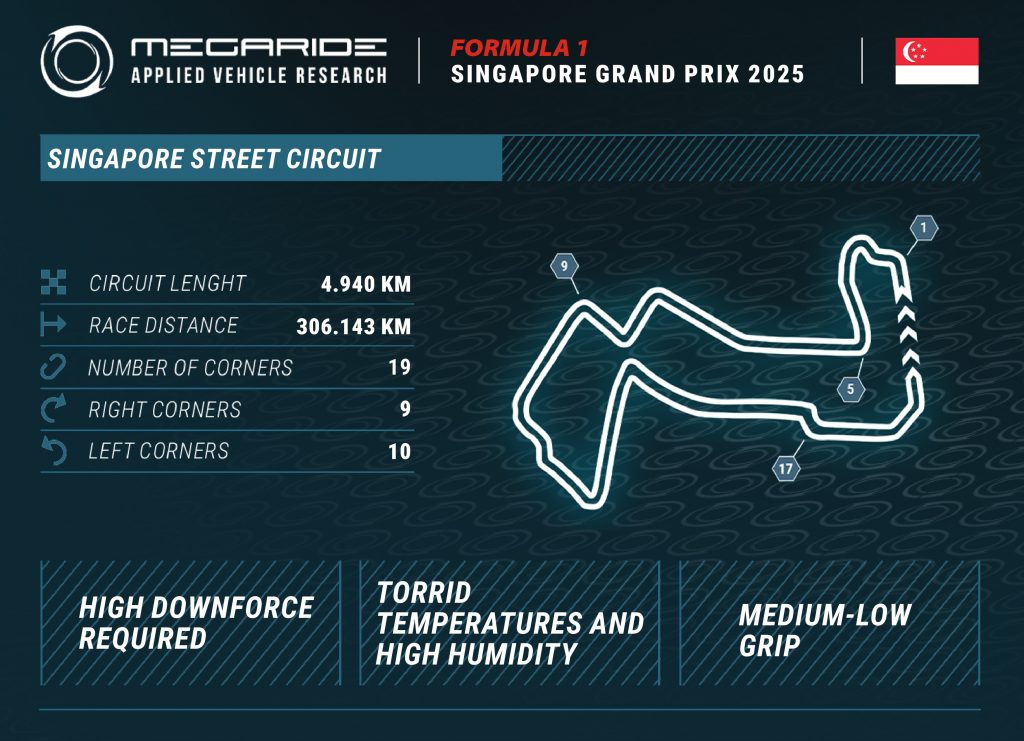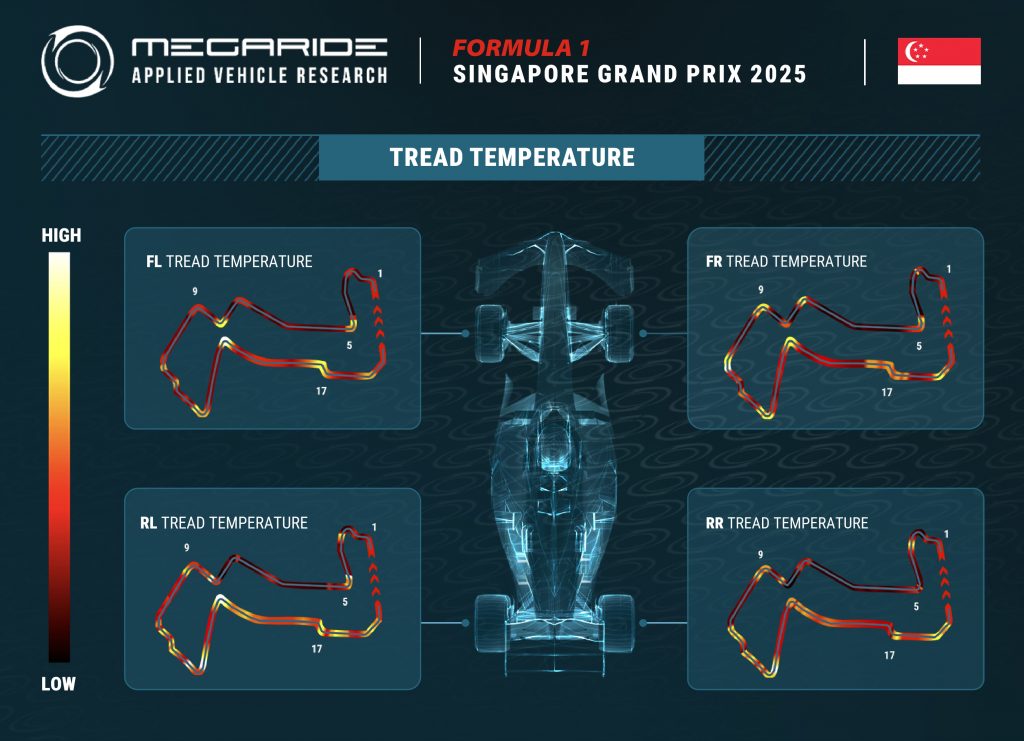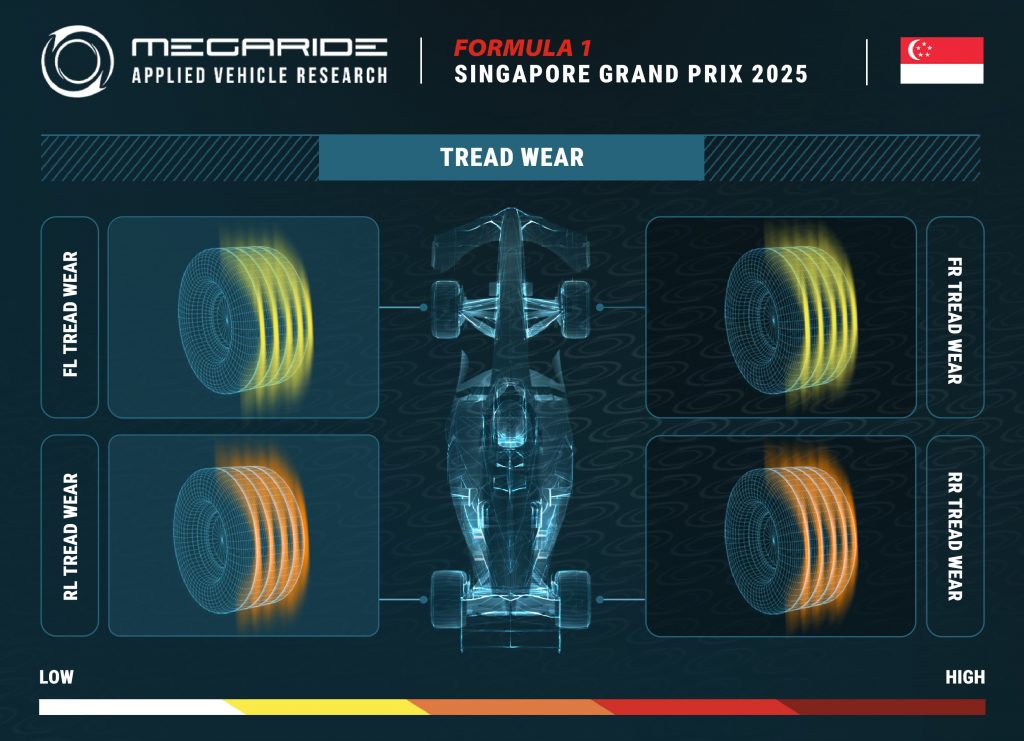
This week Formula 1 returns to the track at Marina Bay for the Singapore GP, marking the start of the final overseas leg of the season. The last two races saw dominant victories for Max Verstappen and a less commanding performance from McLaren. While the Constructors’ Championship now appears destined for the Woking-based team, the Drivers’ title remains wide open.
The Singapore GP was the first night race in F1 history, a trademark that still defines the event today. Inspired by Monaco, the circuit features a narrow and twisty layout with 19 corners, many of them 90-degree turns that demand heavy braking and strong traction. As a result, high downforce is required to maximize car performance through the slow corners and ensure optimal traction on corner exit. Despite the evening schedule, hot temperatures and high humidity make this race extremely demanding for both cars and drivers.

HIGH DOWNFORCE | SWELTERING TEMPERATURES & HUMIDITY | MEDIUM GRIP
- Tire temperature profiles show sustained stress throughout the lap due to the track’s twisty nature, with heavy longitudinal loads from intense braking and acceleration. The most loaded tires are on the right-hand side, with key hotspots at Turns 7-9, Turns 10-13, and Turns 17-19.
- For this weekend, Pirelli has nominated the C3-C4-C5 compounds. Despite the significant vertical loads, the medium grip levels and expected average wear justify this choice.
- As already seen in Baku, track evolution will be substantial across the weekend: low grip at the start, progressively increasing as sessions unfold.

Expected tire wear is medium-to-low, with the rears most stressed due to the repeated braking phases and the high traction required out of slow corners. The layout’s complexity, combined with the tough environmental conditions, makes this GP one of the most physically demanding on the calendar. The narrow circuit also increases the likelihood of a safety car, which can heavily disrupt strategies. Pit stops and tire management will therefore play a decisive role, given the inherent difficulty of overtaking on track.